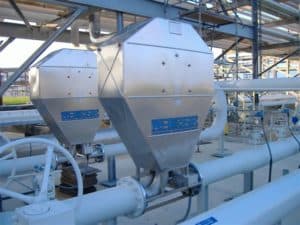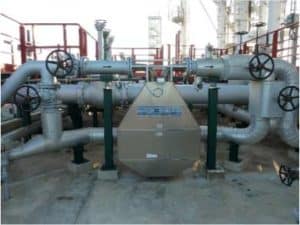Chances are you’ve heard the expression, “It ran like a well-oiled machine.” There’s a reason why this figure of speech is so often used. Simply put, proper oil flow is essential to making heavy machinery and equipment run the way it is supposed to.
This is why successful plant managers know how important it is to maintain consistent flow measurement. Monitoring oil flow ensures that oil is where it needs to be, when it needs to be there.
Let’s look at 5 tips that can help you make sure you are measuring your flow accurately.
Understand the basic equations
 Of course, there is plenty of equipment that will automatically calculate flow measurement. Even so, it is good to have a basic grasp of the calculations behind the measurement.
Of course, there is plenty of equipment that will automatically calculate flow measurement. Even so, it is good to have a basic grasp of the calculations behind the measurement.
When calculating volumetric flow in a pipe, the basic equation is Q = V * A where Q stands for the volumetric flow rate of the liquid, V is the velocity of the fluid and A is the cross-sectional area of the pipe. Simply put, volumetric flow is calculated by multiplying the speed of the liquid by the area of the hole the liquid is flowing through.
Mass flow is a little more involved as density must be taken into account. The basic equation for mass flow is M = Q x D, where D is density. The volumetric flow is multiplied by the fluid density to provide a weight or mass of fluid passing through the pipe.
Know what resources are available to you
That said, there’s no need to despair if mathematics wasn’t your best class at school. With the help of online calculators, you can easily determine flow measurement just by filling in certain parameters.
Use a flow meter
 While it is important to understand the math behind the measurements, most flow measurements are generated by a Coriolis flow meter. Flow meters are a great investment for any industrial manufacturing or production plant. They provide consistent and accurate measurements with easy-to-read displays.
While it is important to understand the math behind the measurements, most flow measurements are generated by a Coriolis flow meter. Flow meters are a great investment for any industrial manufacturing or production plant. They provide consistent and accurate measurements with easy-to-read displays.
Volumetric flow meters are perfect for fluids where the volume matters. For flow measurements where mass is important (most gas measurements are made using mass because of varying pressure conditions and liquid sold by weight has to be measured in mass), Coriolis meters really shine. Coriolis meters can measure both volume and mass, and to very high precision. Rheonik mass flow meters, which we use for all our mass measurement solutions, come in sizes ranging from 1/4″ to 12″. No matter what the needs of your machinery are, we have a meter that can fit them.
Make sure your flow measurement meter is properly calibrated
That said, while flow meters are great tools, they must be correctly set up and maintained. If the flow meter is not properly calibrated, it won’t provide accurate readings.
To ensure accuracy, make sure to run periodic tests and check diagnostics often so that you know your meters are functioning properly.
Ensure your flow meter is installed properly
Even with proper calibration, flow meters can perform poorly when they are not properly installed. Following a few basic guidelines can ensure the best performance out of your flow meter. Make sure it’s installed in a place where it will always be full of liquid (or empty of liquid in gas applications). Gas or vapor in a liquid flow meter (and vice versa) can affect the meter’s ability to make accurate calculations. Don’t install a meter close to elbows or other flow disturbing features in the piping. If the meter is too close to these irregularities, it may not be able to calculate flow properly. For nearly all volumetric meters, it’s best that the meter is installed at a location where there is sufficient straight piping on either side of the meter. Coriolis meters are more forgiving and in many cases can be installed without straight piping runs – a real advantage in tight places.

